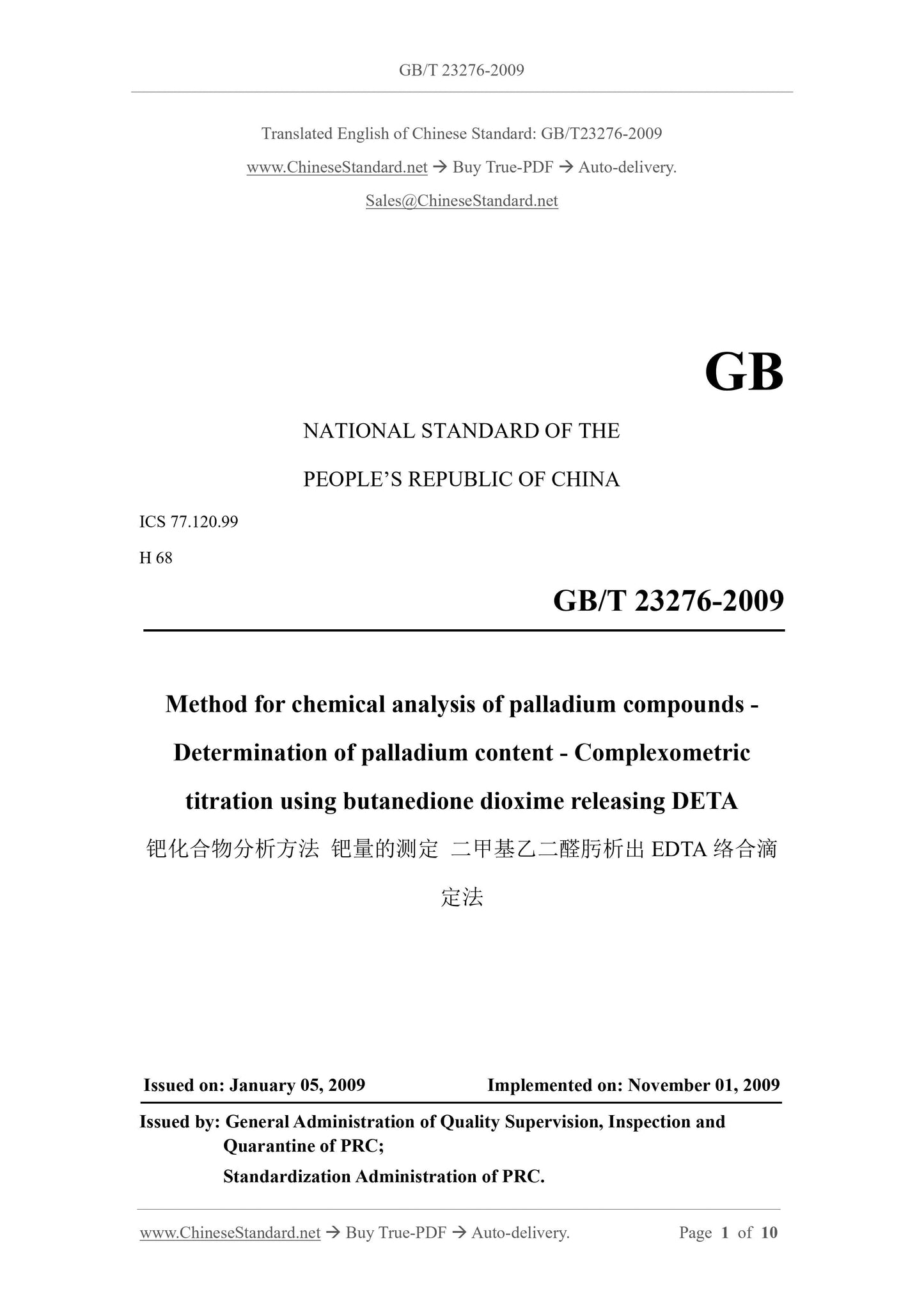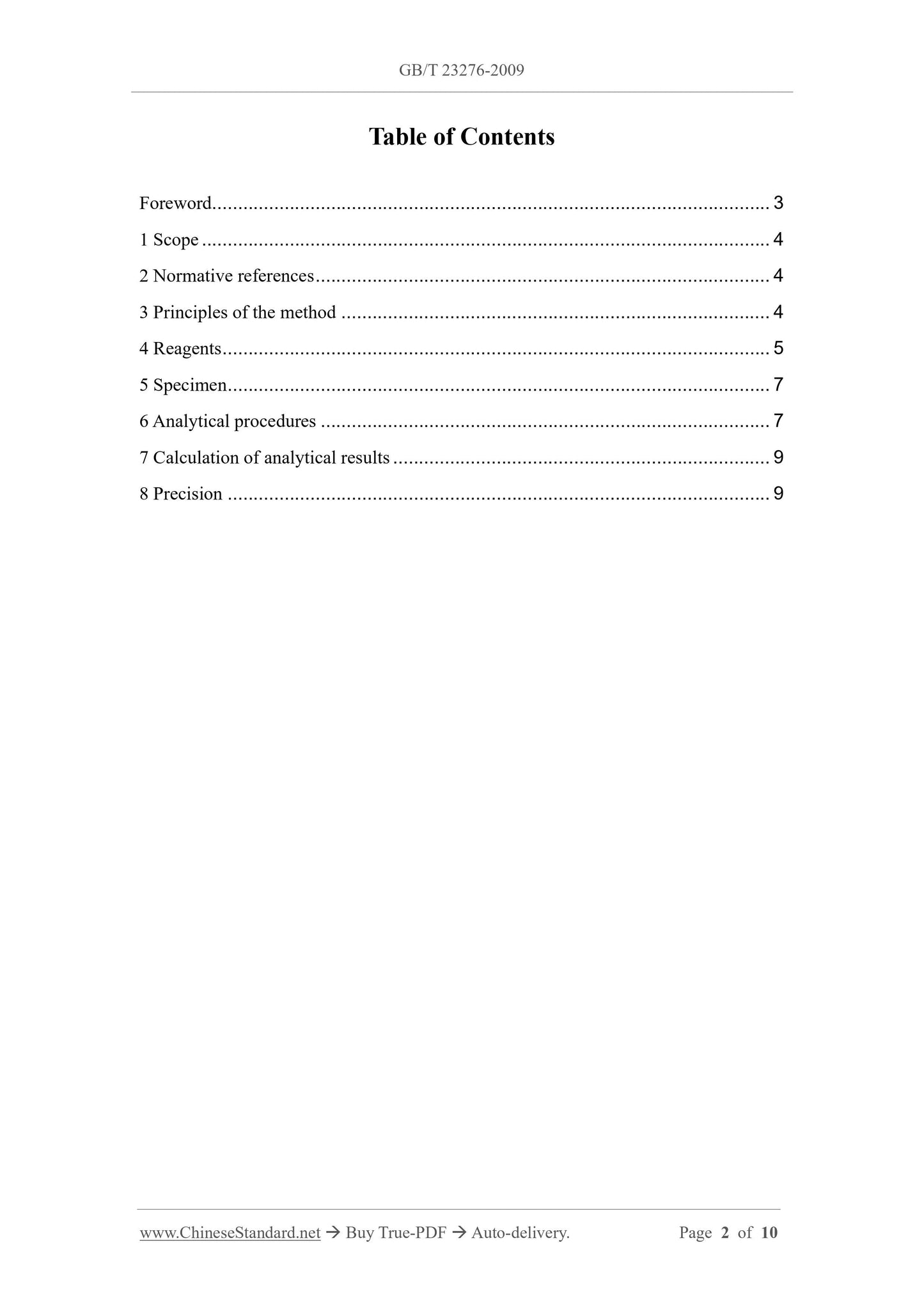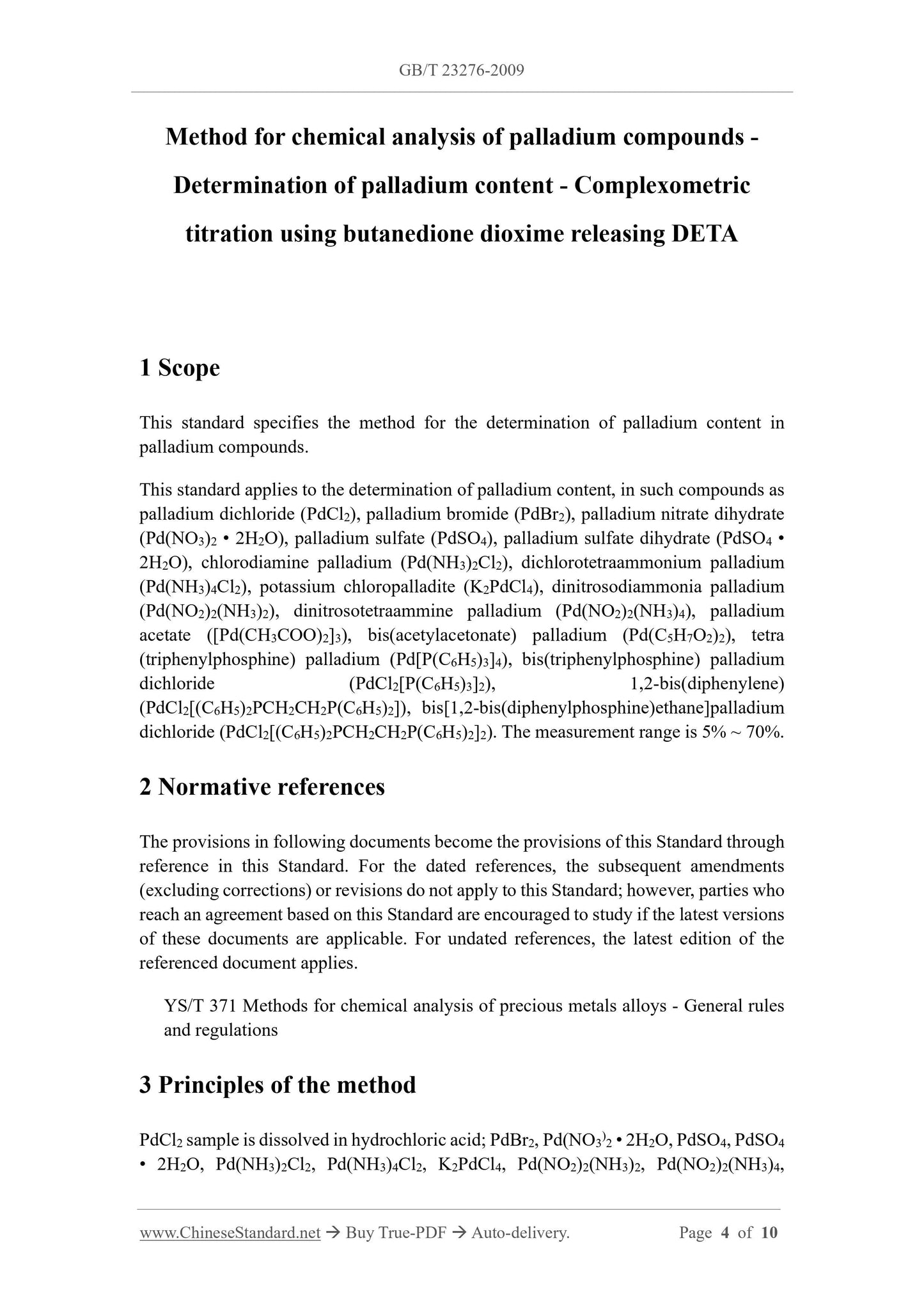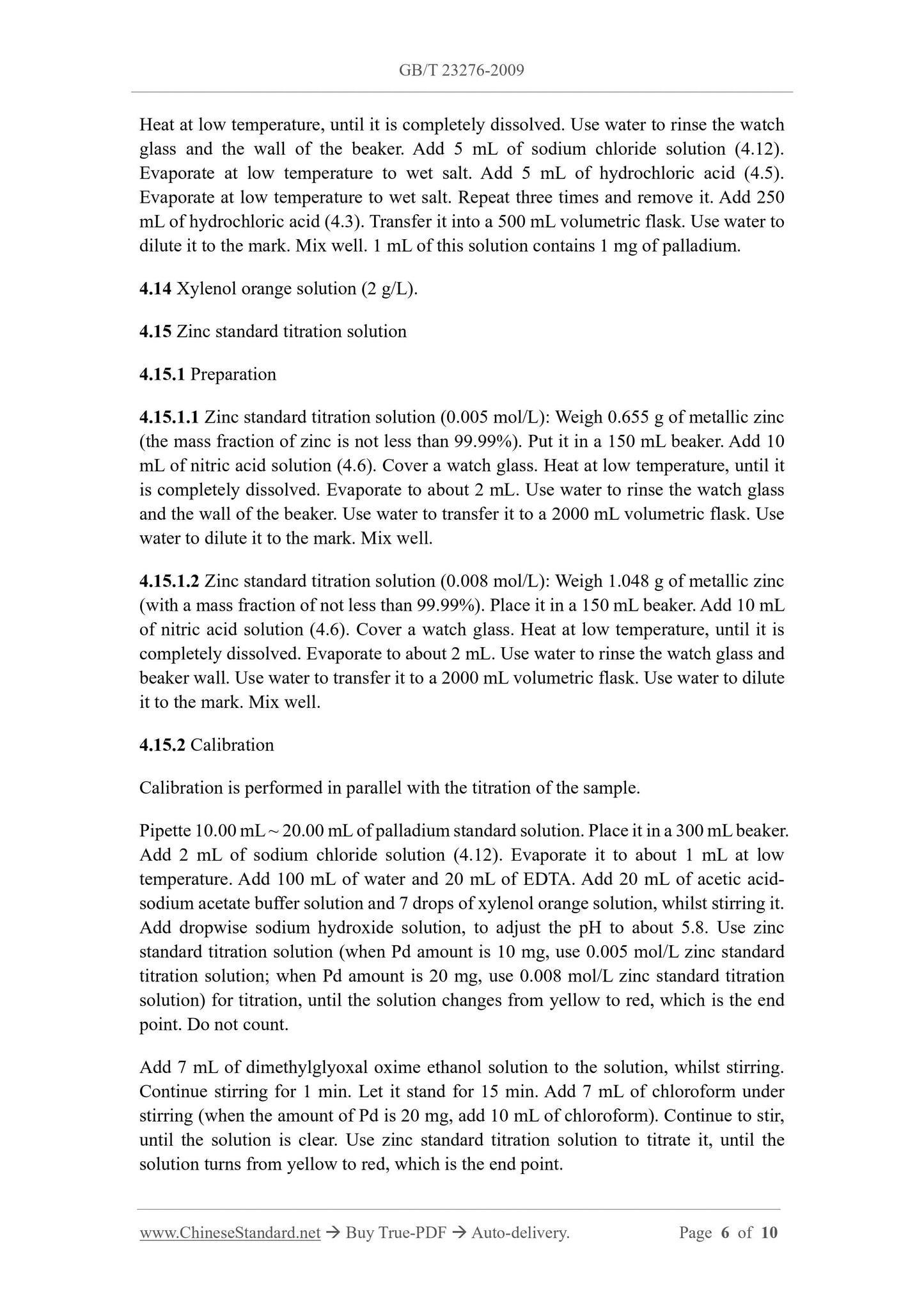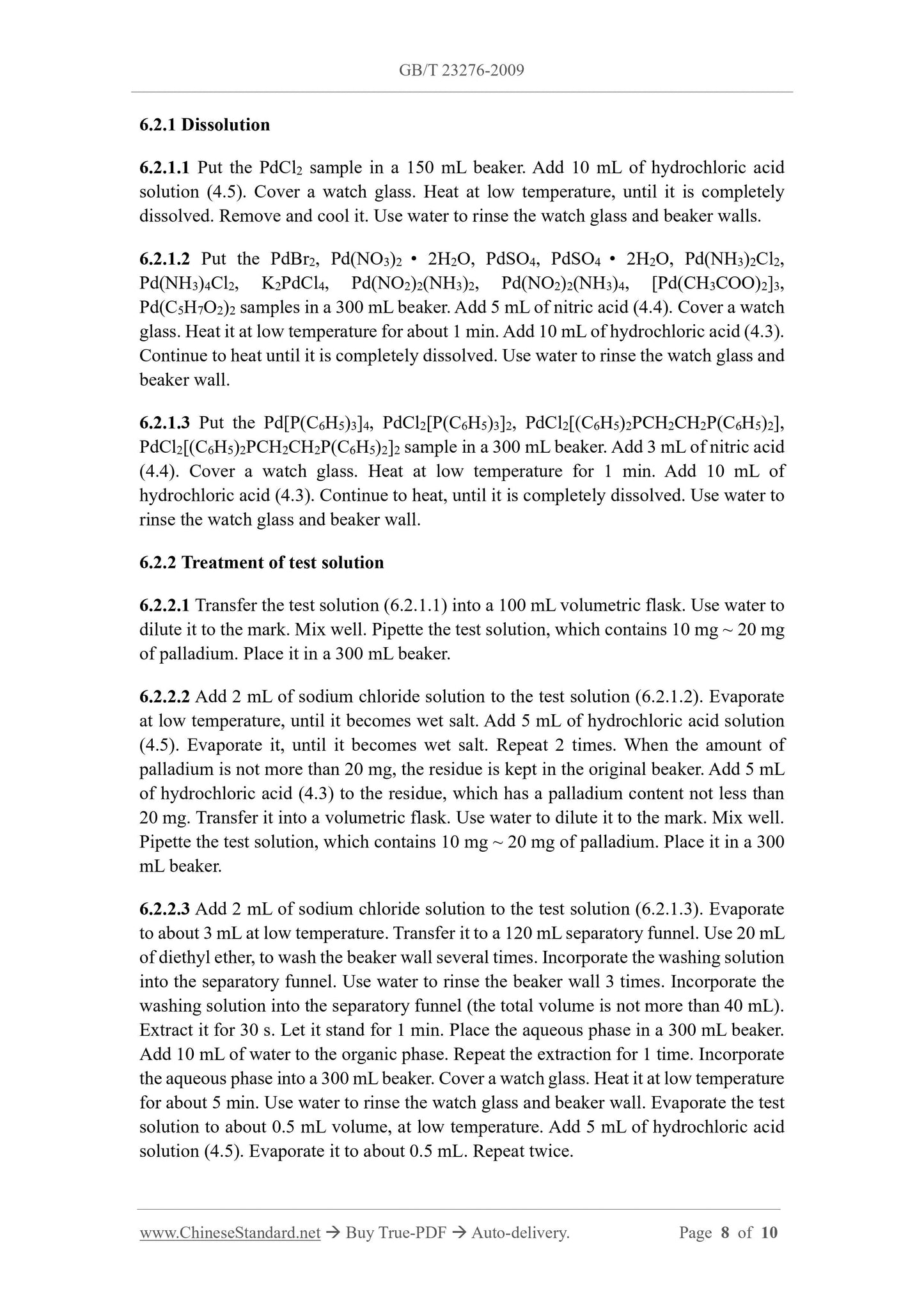1
/
of
5
www.ChineseStandard.us -- Field Test Asia Pte. Ltd.
GB/T 23276-2009 English PDF (GB/T23276-2009)
GB/T 23276-2009 English PDF (GB/T23276-2009)
Regular price
$110.00
Regular price
Sale price
$110.00
Unit price
/
per
Shipping calculated at checkout.
Couldn't load pickup availability
GB/T 23276-2009: Method for chemical analysis of palladium compounds - Determination of palladium content - Complexometric titration using butanedione dioxide releasing EDTA
Delivery: 9 seconds. Download (and Email) true-PDF + Invoice.Get Quotation: Click GB/T 23276-2009 (Self-service in 1-minute)
Newer / historical versions: GB/T 23276-2009
Preview True-PDF
Scope
This standard specifies the method for the determination of palladium content inpalladium compounds.
This standard applies to the determination of palladium content, in such compounds as
palladium dichloride (PdCl2), palladium bromide (PdBr2), palladium nitrate dihydrate
(Pd(NO3)2 • 2H2O), palladium sulfate (PdSO4), palladium sulfate dihydrate (PdSO4 •
2H2O), chlorodiamine palladium (Pd(NH3)2Cl2), dichlorotetraammonium palladium
(Pd(NH3)4Cl2), potassium chloropalladite (K2PdCl4), dinitrosodiammonia palladium
(Pd(NO2)2(NH3)2), dinitrosotetraammine palladium (Pd(NO2)2(NH3)4), palladium
acetate ([Pd(CH3COO)2]3), bis(acetylacetonate) palladium (Pd(C5H7O2)2), tetra
(triphenylphosphine) palladium (Pd[P(C6H5)3]4), bis(triphenylphosphine) palladium
dichloride (PdCl2[P(C6H5)3]2), 1,2-bis(diphenylene)
(PdCl2[(C6H5)2PCH2CH2P(C6H5)2]), bis[1,2-bis(diphenylphosphine)ethane]palladium
dichloride (PdCl2[(C6H5)2PCH2CH2P(C6H5)2]2). The measurement range is 5% ~ 70%.
Basic Data
| Standard ID | GB/T 23276-2009 (GB/T23276-2009) |
| Description (Translated English) | Method for chemical analysis of palladium compounds - Determination of palladium content - Complexometric titration using butanedione dioxide releasing EDTA |
| Sector / Industry | National Standard (Recommended) |
| Classification of Chinese Standard | H68 |
| Classification of International Standard | 77.120.99 |
| Word Count Estimation | 6,635 |
| Date of Issue | 2009-01-05 |
| Date of Implementation | 2009-11-01 |
| Quoted Standard | YS/T 371 |
| Regulation (derived from) | National Standard Approval Announcement 2009 No.2 (Total No.142) |
| Issuing agency(ies) | General Administration of Quality Supervision, Inspection and Quarantine of the People's Republic of China, Standardization Administration of the People's Republic of China |
| Summary | This standard specifies the determination of the content of palladium in palladium compounds. This standard applies to palladium dichloride (PdCI2) palladium bromide (PdBr2), dihydrate palladium nitrate (Pd (N03) 2. 2H2O), palladium sulfate (PdSO4), palladium sulfate dihydrate (PdSO4 �� 2H20), dichloro ammonia palladium (Pd (NH3) 2CI2), tetraamine palladium chloride (Pd (NH3) 4CI2), ethylene chloride, potassium palladium (K2PdCl4), two dinitrodiammine palladium (Pd (NO2) 2 (NH3) 2), nitroso tetraamine palladium (Pd (N02) 2 (NH3) 4), palladium acetate ([Pd (CH3COO) 2] 3), bis (acetylacetonato) palladium (Pd (C5H702) 2), four (three Lin phenyl) palladium (Pd [P (C6H5) 3] 4), bis (triphenylphosphine) palladium dichloride (PdC12 [P (C6H5) 3] 2) 1, 2-bis (diphenylphosphino) ethane palladium dichloride (PdCl2 [(C6H5) 2PCH2CH2P (C6H5) 2]), bis [1, 2-bis (diphenylphosphino) ethane] palladium dichloride (PdCI2 [(C6H5) 2PCH2CH2P (C6H5) 2]) palladium content of the test compound. Measuring range: 5% ~ 70%. |
Share
